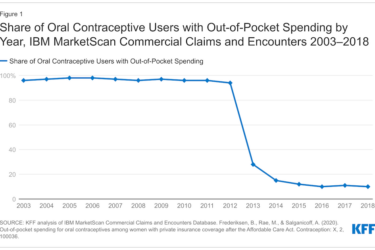
This spring, Gilead Sciences Inc. introduced Solvaldi, a drug that could cure the liver virus that causes hepatitis C. The drawback, however, was the cost of $84,000 or about $1,000 per pill, as Julie Appleby reported at Kaiser Health News.
“And that price tag is prompting outrage from some consumers and a scramble by insurers to figure out which patients should get the drug – and who pays for it,” she wrote.
Bernard Munos wrote in Forbes that the cost of one recently introduced cancer medication was $66,000 and another was $90,000.
At such high prices, consumers may be unable to afford these medications and insurers may not cover them. If insurers do cover these high-priced drugs, they may require patients to pay the typical copayment of 30 percent or more.
In a new report from the University of Michigan Center for Value-Based Insurance Design (V-BID Center) and the National Pharmaceutical Council (NPC), researchers argue that insurers need a new approach to paying for specialty medications.
The report, “Supporting Consumer Access to Specialty Medications Through Value-Based Insurance Design,” makes the case that if insurers apply the same copayments to every drug, then consumers have no incentive to choose high-value medications. In fact, consumers may have a disincentive to use medications that can cure disease, said A. Mark Fendrick, M.D., the director of the V-BID Center. One of the authors of the report, Fendrick will present it today at the Institute of Medicine’s National Cancer Policy Forum.
“As we carefully scrutinize the cost of specialty pharmaceuticals, our job is to focus the discussion away from how much we spend and toward how well we spend,” he said. “It’s incomprehensible that insurers would ask consumers to pay the same percentage for a specialty drug that could cure cancer or a life threatening disease such as hepatitis as they would for a drug that will not cure anything.”
Physicians prescribe specialty medications for patients with cancer, rheumatoid arthritis, multiple sclerosis and other, serious, life-threatening conditions. While pharmaceutical companies are introducing more of these medications, Medicare, Medicaid and commercial insurers are shifting more costs to consumers. Yet, higher cost-sharing could make such medications unaffordable.
“Higher cost sharing is associated with reductions in both essential and non-essential service use,” the report said. What’s more, the potential for harm due to non-adherence is particularly grave for patients with conditions ideal for specialty medications.
To counter the effects of high cost sharing, the V-BID Center recommends lowering or removing financial barriers to essential, evidence-based, high-value clinical services. Doing so helps to align patients’ copayments with the value of services.
Using V-BID for specialty medications, insurers should ensure that cost-sharing is related to clinical value and not simply tied to acquisition cost, the report said. To do so, the report suggested insurers use the following techniques:
- Impose no more than modest cost-sharing on high-value medications
- Reduce cost-sharing in accordance with patient- or disease-specific characteristics
- Relieve patients from high cost-sharing after failure on a different medication
- Use cost-sharing to encourage patients to select high-performing providers and settings for their care
V-BID principles can improve quality, reduce waste, foster more patient engagement and mitigate concerns that one-size-fits-all cost-sharing could lead individuals to skip clinically important care, the report said.









